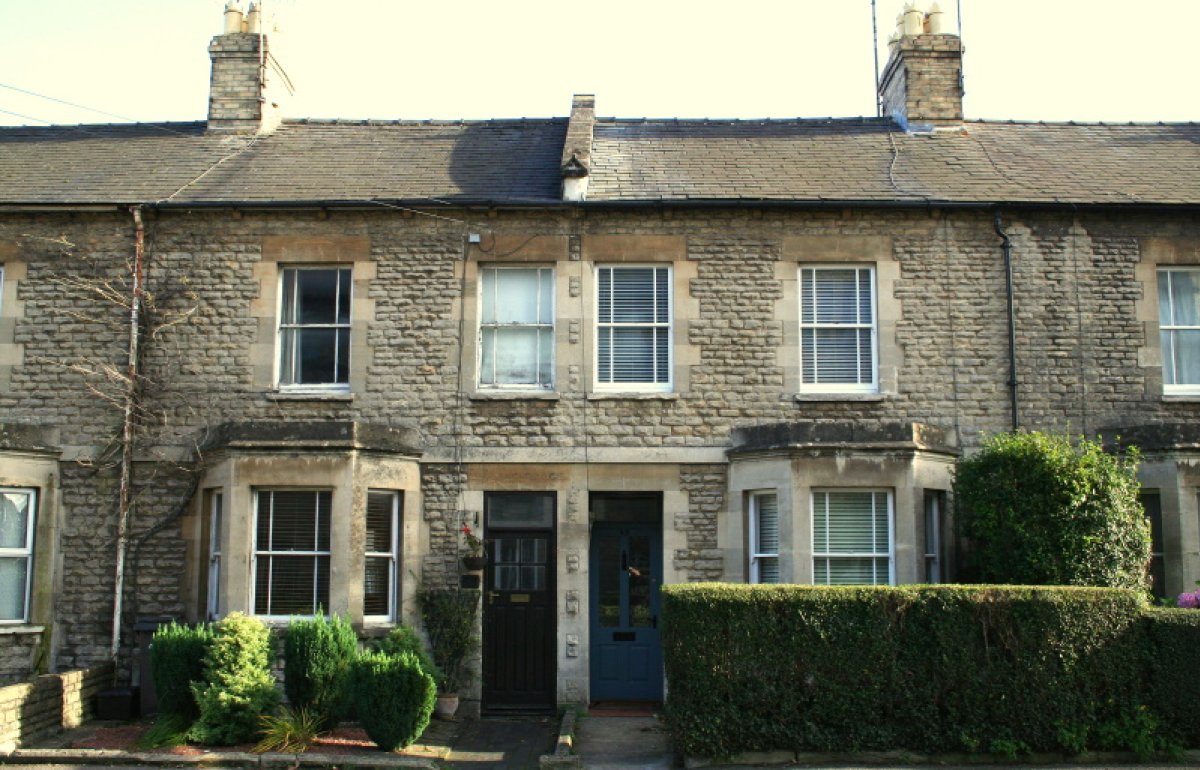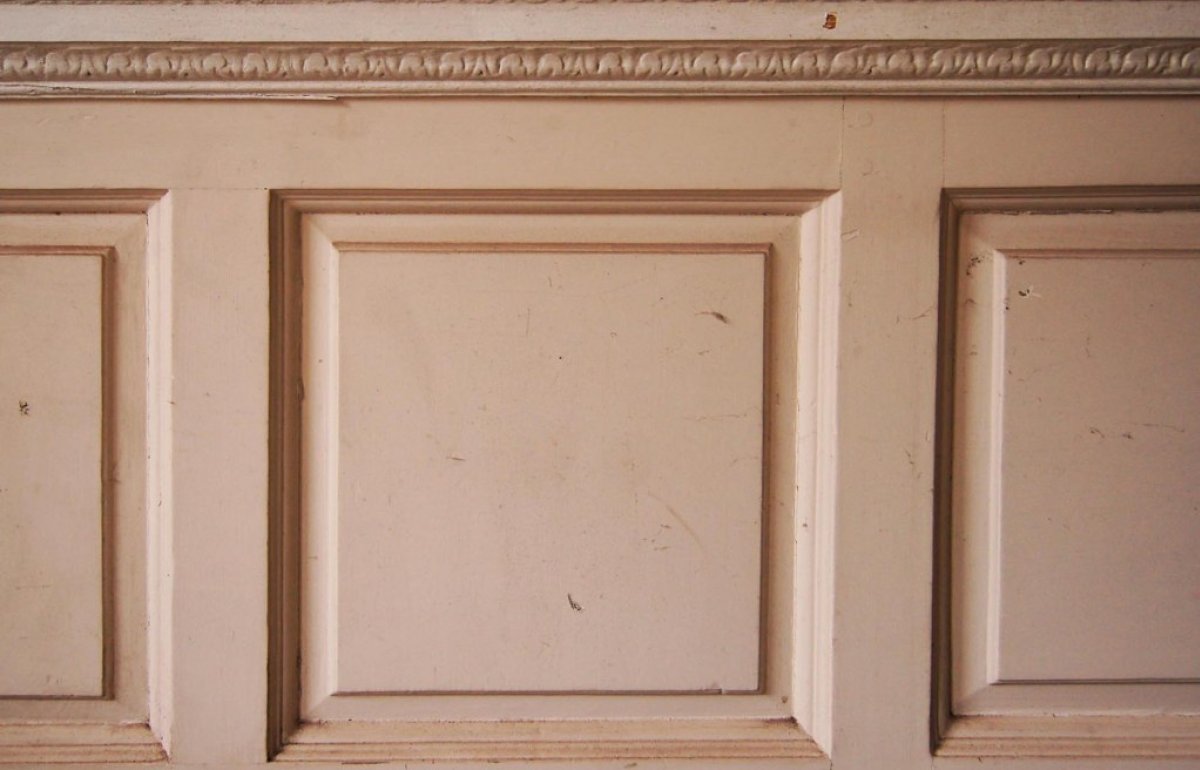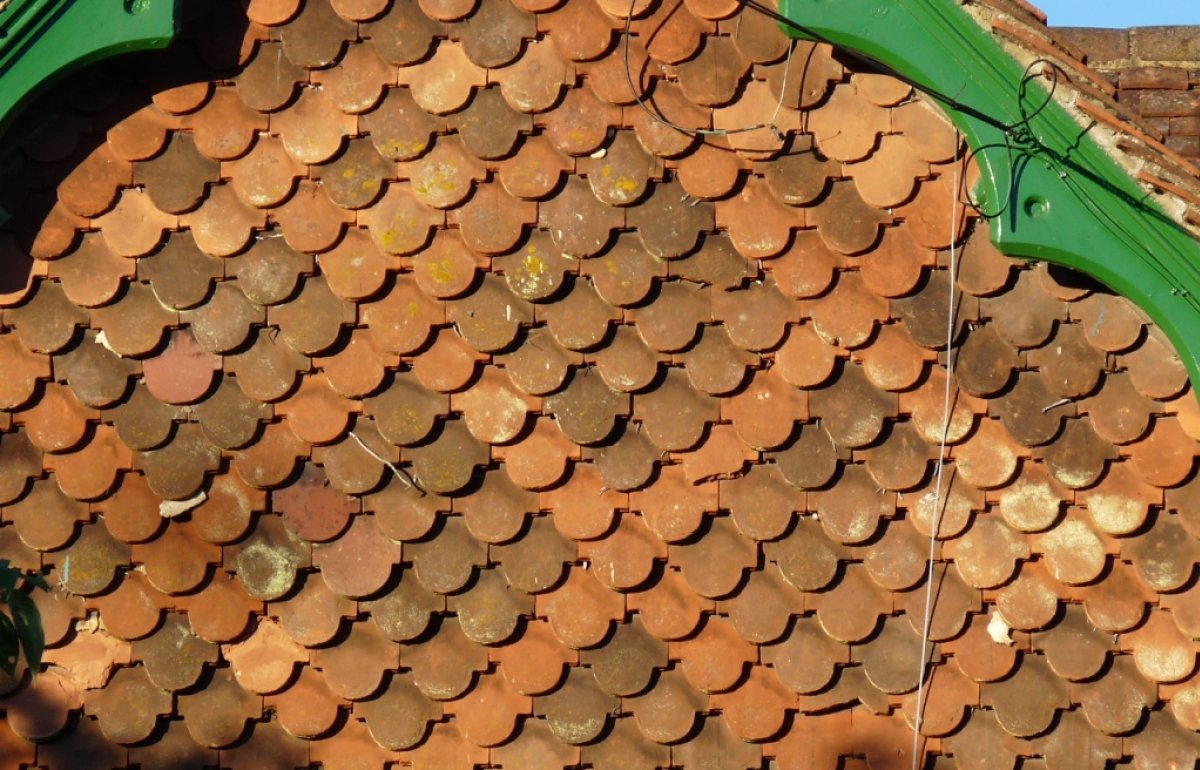Stone floors
This advice note sets out the key themes that emerge when caring for one of a historic building’s finest – yet very often overlooked – architectural assets.
What are the types of stone floor?
Where available, durable local stone of various sorts has been used as slabs or tiles for flooring, especially at ground or cellar level. Cobbles or ‘pitched’ floors (comprising small pieces of stone set on edge) were frequently laid in ancillary areas. Decorative schemes with stones of contrasting colour, including imported marble, became popular from the 17th century. Before the 1800s, stone flooring was laid on well-rammed earth or chalk, sometimes with a bed of sand or lime mortar.
Unnecessarily replacing old stone floors harms a building’s character. Try, therefore, to retain them.
Lifted stone slab
Is it advisable to lay a damp-proof membrane (DPM) beneath an old stone floor?
It is rarely advisable to insert a DPM below old stone floors because they must usually be allowed to ‘breathe’. Laying a plastic DPM on a new concrete subfloor can, by restricting evaporation, displace moisture into the base of a previously dry adjacent wall, causing dampness there.
Instead, if a floor is genuinely damp aim to tackle the cause – for example, by removing impermeable rubber-backed carpets, improving site drainage or controlling condensation. Allow time for the floor to dry out. Residual salt deposits can be brushed off or, where serious, possibly poulticed out by a specialist.
How do I minimise damage when lifting old stone floors?
Only take up and re-lay old floor stones if there is little alternative. The attractive patina from centuries of wear is rarely recaptured and stones can easily fracture.
When new heating pipes are installed, employ a competent builder to lift the floor with great care instead of leaving this to plumbers. Stones should be numbered beforehand and a plan made of their arrangement. The intervention caused by lifting and entirely re-laying an old floor to install underfloor heating is normally hard to justify.
How do I deal with an undulating stone floor or loose slabs?
Undulations add interest to old floors so unless they are dangerous are best accommodated. Where necessary, isolated uneven stones can be rebedded in coarse sand or hydraulic lime mortar without re-laying the whole floor, although any concerns about instability in the subfloor should be investigated and, if necessary, rectified first. Rocking slabs should be reset likewise, before they crack. Slight undulations might be reduced by laying suitable matting to avoid disturbing a floor. An appreciable slope is occasionally overcome by constructing a reversible new, ventilated floor structure on top
What should I do with floor stones that are flaking or are chipped?
The most viable option may well be to simply dress back loose material where stones are flaking, although laminations in limestone can in some cases be repaired by conservators using injections of lime-based grout. Take care to minimise damage from vacuum cleaners. Suitable matting can reduce further deterioration. Where there is serious erosion, it may be possible to lift and reverse stones to avoid replacing them.
While any deep holes or chipped edges can be filled with a hydraulic lime mortar, continuing maintenance is likely to be necessary. Renewing part of a stone with matching new material, for example, where a corner has broken, is normally preferable to complete replacement.
How should I repoint stone floors or deal with cracks?
Where needed, joints between stones can be pointed with a hydraulic lime mortar. Although not essential, cracks across stones that are otherwise secure can be similarly filled. If joints have never been filled or are dry-jointed with sand, repointing with lime is not necessarily required.
Narrow joints might best be refilled with a stiff hydraulic lime mortar packed in using a hacksaw blade. Alternatively, inject a hydraulic lime grout, allow this to set and finish the surface with quite a dry lime pointing mix. Strong cementitious mortar or waterproof grouts that inhibit ‘breathability’ are not recommended.
How can I best clean and maintain an old stone floor?
Old stone floors usually only require regular sweeping or vacuuming and occasional washing with minimal quantities of water (possibly with pH-neutral soap). Stains frequently respond to a 50:50 water:white spirit solution or specialist poulticing. The sparing use of microcrystalline wax is sometimes appropriate to protect surfaces or reduce powdering. ‘Breathable’ floor coverings (natural fibre matting etc) can provide added protection. Avoid harsh cleaning agents and impermeable sealants.
Where unsuitable later surfaces are removed above stone floors, residues of bitumen-based tile adhesive or concrete may be cleaned off using white spirit or small tools respectively.




